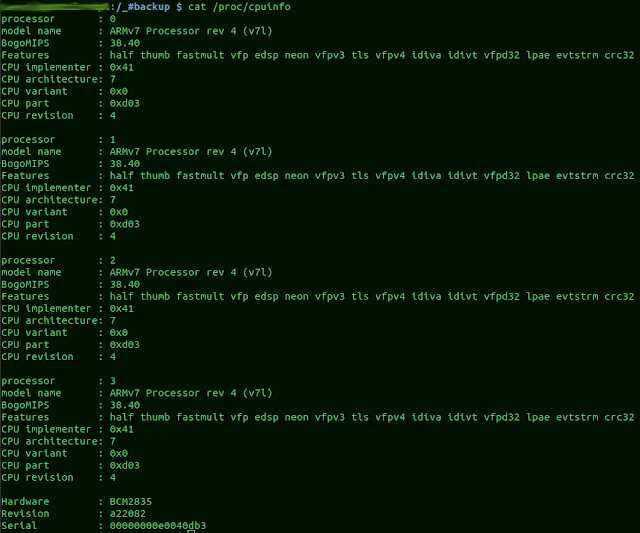

If you ask me, hardinfo is an embarras de richesses. If hardinfo is not installed on your Linux box, you can do so with the following command on your Ubuntu system. Hardinfo is another handy utility that provides a wealth of information about your Linux system.Īlthough installed on the command line, hardinfo is actually a GTK based GUI utility.

Not the latest and greatest of processors but adequate for most users.ĥ.
CAT CPUINFO PC
Voila, your PC runs on a Core 2 Quad core Q9400 processor at 2.66GHz. Model name : Intel(R) Core(TM)2 Quad CPU Q9400 2.66GHz $ cat /proc/cpuinfo | grep 'model name' | uniq Now that we have the vendor info (above) let’s dig into details of the Intel processor. The output spits out just the vendor name, nothing more.Ĥ. If you’re interested in just knowing the CPU vendor, go with cat /proc/cpuinfo along with with the grep command. In the following two examples, we’ll tweak /proc/cpuinfo to get only the information we need.ģ. Use it with the less prefix since the output is big and quickly vanishes beyond the top of the screen.Īs with the previous command, we see that the output of /proc/cpuinfo provides information about the processor, vendor, cores and frequency. Another favorite of system administrators is /proc/cpuinfo. Let’s start with lscpu, a favorite of both users and system administrators.Ī quick glance at the above output tells us that our Linux box has an Intel, quad-core, 64-bit processor running at 2000MHz.Ģ. We’ll dig down for information on the CPU vendor, check if it’s 32-bit or 64-bit, look for the number of cores, frequency, cache size and more.ġ. In this post, we’ll take a look at a bunch of commands that provide details about the CPU inside a Linux computer. flags – Defines a number of different processor attributes, such as the presence of a floating-point unit (FPU) and the ability to process MMX instructions.The command line interface is so versatile that you can find considerable information about even the hardware side of your Linux server or desktop.cache size – Tells you the amount of level 2 memory cache available to the processor.cpu MHz – Shows the processor’s precise speed, in megahertz, to the thousandth decimal point.model name – Gives you the common name of the processor, including the project name.This is helpful to determine the type of architecture of an older system and is helpful in determining which compiled RPM package would best suit that system. If your computer is an Intel-based system, simply place the number in front of “86” to determine the value. cpu family – Authoritatively tells you the type of processor you have in the system.If you have more than one processor it will display all processor information separately counting the processors using zero notation. If you have one processor it will display a 0. processor – Provides each processor with an identifying number.Model name : Intel(R) Xeon(R) CPU E5-2660 0 2.20GHzįlags : fpu vme de pse tsc msr pae mce cx8 apic sep mtrr pge mca cmov pat pse36 clflush dts acpi mmx fxsr sse sse2 ss ht tm pbe syscall nx pdpe1gb rdtscp lm constant_tsc arch_perfmon pebs bts rep_good xtopology nonstop_tsc aperfmperf pni pclmulqdq dtes64 monitor ds_cpl vmx smx est tm2 ssse3 cx16 xtpr pdcm pcid dca sse4_1 sse4_2 x2apic popcnt tsc_deadline_timer aes xsave avx lahf_lm ida arat epb pln pts dtherm tpr_shadow vnmi flexpriority ept vpid xsaveoptĪddress sizes : 46 bits physical, 48 bits virtualīelow is the various items you would see in the output and their respective explanations.


 0 kommentar(er)
0 kommentar(er)
